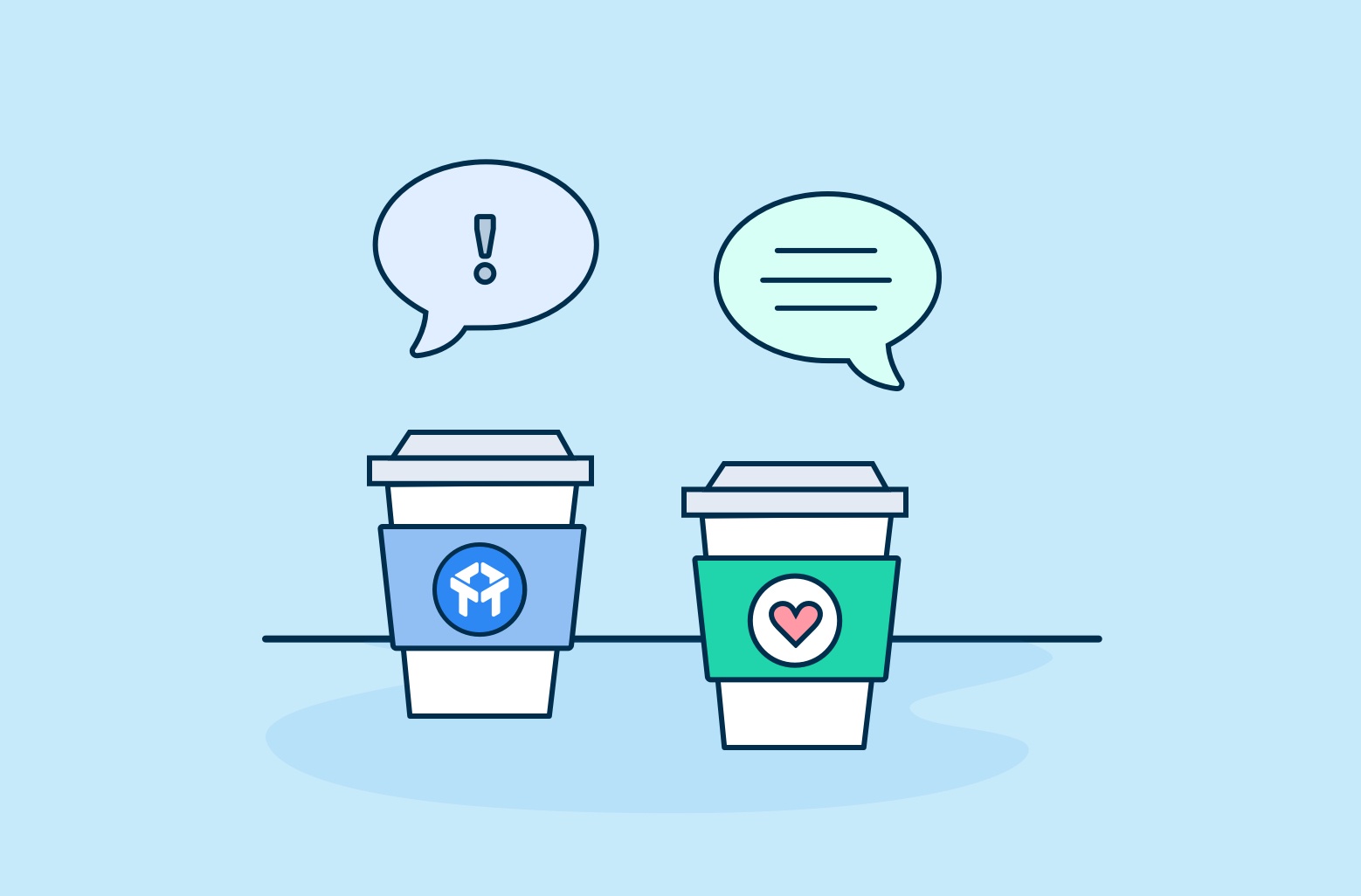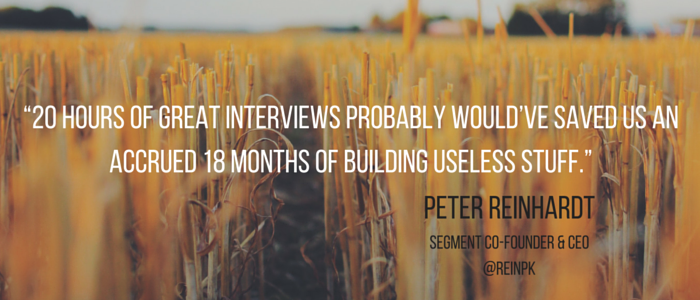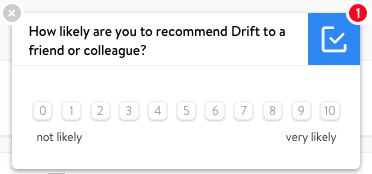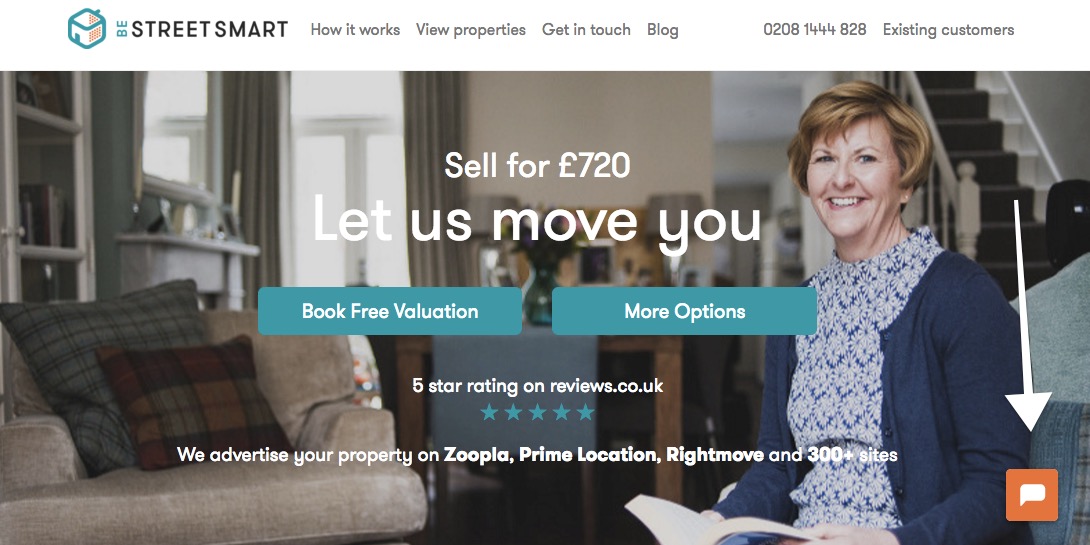
There’s a secret to growth marketing that no one really talks about anymore.
Maybe because it’s not new — and it’s not all that cool or techy.
Or maybe because doing this thing usually ends up creating more work.
But time and time again, this one little “growth hack” will have the biggest impact on growing your business: talking to customers.
Yep. It’s that simple.
The problem is that talking to customers seems fluffy.
“How will we measure the success of this?”
“Who’s feedback is meaningful?”
So instead, we fall in love with and rely on our data and our dashboards. Because data is concrete. It’s black and white.
But when it comes to startups and growing a business, we have a tendency today to rely too much on the data.
It’s almost like we’ve focused so much on being data-driven that we’ve forgotten about being customer-driven (and after all, the purpose of business is to create customers after all).
Click here to learn more about Drift.
Why It Pays To Talk To Your Customers
The problem with data is that it’s usually only, well, data.
And in order to really understand what your customers want, you need to actually hear their pain, see their frustrations, their challenges, and their desires first hand.
Peter Reinhardt and his team had three ideas for a business back in 2011, so they did what most people would do: they just started building.
But he quickly realized that they had simply convinced themselves that they were working on real problems that people had — they never went out and actually talked to potential customers or did any customer development.
“As engineers who had never done this before, talking to people didn’t seem like real work. Real work was coding” Peter said. “But in reality, 20 hours of great interviews probably would’ve saved us an accrued 18 months of building useless stuff.” (Tweet This)

Fast forward to today and Segment has 6,500 happy customers and a team of 70 people. Lesson learned.
But talking to customers doesn’t just help get your business off the ground and pointed in the right direction — it can help you blow your competition out of the water in the later stages, too.
Think about how much more effective you could be in selling and marketing to your core audience if you not only knew what their pain points were, but you also were about to find out:
- How they work
- What blogs they read, newsletters they subscribe to, and accounts they follow on Twitter
- What other products they use so you can understand what’s competing for their attention
Yet time and time again, we forget this.
Close.io CEO Steli Efti equates talking to customers to going to the gym and eating healthy:
“Visiting customers is like working out or eating healthy: everybody knows they should do it, very few people actually do. And it’s not like we’re above others. We launched Close.io in January 2013. Our first customer visit? May 2014. It took us more than a year to set foot in a customer’s office. Isn’t that crazy?!?” (Tweet This)

At the end of the day, great sales and marketing really just comes down to understanding your customers.
But the only way you’ll ever be able to truly find that stuff out is by talking to them.
And if your competition is able to understand your customers better than you, guess who’s going to end up winning that customer’s business one day?
OK. We’ve talked enough about why you should be talking to your customers. Here’s how to actually go out and do it.
5 Simple Ways To Talk To Customers And Get More Feedback
1) Your welcome email. If you’re reading this, there’s a good chance you send some type of welcome email after someone signs up for your product or service, joins your email list or downloads a piece of content.
But there’s a huge mistake that most people make with those welcome emails — they don’t send them with a purpose.
Too many people treat their welcome email as a throw away, or something that gets written at the last minute as a finishing touch to onboarding.
And the reason that’s a huge mistake is because your welcome email is the single most important email that you will send to your customers and subscribers.
These people are brand new. They just signed up. This is when they are the most enaged. It’s rare that you’re ever going to get this level of attention and engagement from someone again without putting in a ton of effort, so make sure to write your welcome email with a purpose.
Yes, it should be smart, funny, and welcoming – but it should also be designed to get a response. Ask new users why they signed up, what they are looking to accomplish, what they’re struggling with, or what brought them to use your product or service.
At Drift, our welcome email blows all of our other emails out of the water when it comes to engagement, with a 76% open rate and a 25% click rate – compared the industry average of 21% and 2% respectively (thanks to MailChimp’s benchmarks).

Another simple tweak to your welcome email is to let people know that they can reach you via live chat right from that welcome email if they have any questions.
This is a super simple way to let people know that your help is just a simple message away.
2) Net Promoter Score. Start by asking all of your customers the NPS question daily so you can begin benchmarking the score and, most importantly, track the qualitative feedback.
This is where the real gold is – not the actual score. Take the time to read each response and bucket the feedback appropriately.
Daily NPS works well for early stage startups who might not have a dedicated customer success team. This way, you can manage a few responses a day, vs. trying to deal with thousands of responses at once. Use this as an opportunity to reply to each customer personally and start a conversation.

At Drift, for example, we ask promoters for referrals, and reach out to passives and detractors directly to figure out where we need to improve. NPS can also be an amazing way to uncover opportunities for upsell and cross-sell, and help you predict churn.
3) Use live chat on your website and in-app. Put your consumer hat on for a second. If you’re thinking about buying something or you’re stuck inside of a product that you use, do you want to pick up the phone and talk to someone? In most cases, the answer is no. And your customers and prospects don’t want to pick up the phone either.

Live chat is one of the best ways to have real conversations with customers while they’re live on your website or using your product.
4) Start doing all hands support. All hands support is one of the best ways to keep your entire team close to your customers. This doesn’t mean that you should replace your support team — it’s important to have dedicated help for your customers — but doing all company support gets your team to solve customer problems faster.
Your team is hearing about the problem first-hand and can empathize with the customer. Plus, the customer is usually blown away that they are talking to someone who actually can solve their problem — like one of the engineers that built your product.
5) Just ask. This is one of the best ways to start talking to more customers – and it’s also the most obvious. Sometimes you literally just have to ask.
Two years ago, Groove CEO Alex Turnbull noticed a spike in churn and wanted to go beyond the data he was seeing to try and figure out why. So he cut right to the chase: he emailed every single customer and asked for just 10 minutes of their time to talk.
As a result, he spent more than 100 hours talking to 500 Groove customers and ended up with feedback that helped him right the ship. In Alex’s case, he reached out to everyone via email at once which produced hundreds of responses, but you can also create on-going campaigns designed to get customer feedback one by one so you don’t have to find the time to manage it in huge chunks. Sending an email blast to every customer is certainly one way to get feedback, but you can also use your customer data to create relevant segments.
A Framework For Prioritizing Customer Feedback
Now, there’s one last thing worth mentioning when it comes to talk to customers — you’re going to start getting more customer feedback.
Customer feedback is the breakfast of champions (I think that’s how the saying goes) but it can also be kind of paralyzing. Figuring out what to do with your customer feedback is usually the hardest part of getting feedback.
But there’s a simple framework for customer feedback that we like to follow at Drift called the Spotlight Framework.
The Spotlight Framework helps you focus on finding the right parts of feedback to focus on, and prioritize what to do once you’ve collected the feedback (i.e was it a UX issue, a product marketing issue, a positioning issue, or something else).



